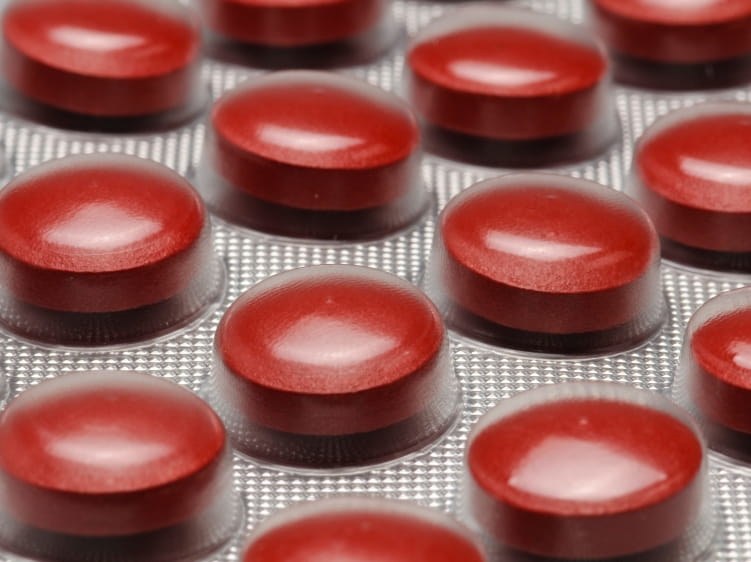Iron Poisoning: A Simple But Serious Mistake

The Bottom Line
Iron is essential to our health. It is found naturally in many foods, added to some fortified food products, and widely available as a supplement. An overdose of iron supplements can be life-threatening.

Why is iron important for our health?
Iron is an element that is essential to our health. It is especially important for the proper functioning of our red blood cells, which carry oxygen throughout the body. People with too little iron in their bodies can develop iron-deficiency anemia, which causes extreme fatigue, weakness, and pale skin. Iron is found in many foods, and it is added to some food products. It is also widely available as a supplement. Although iron is essential and is needed to maintain health, too much can lead to iron toxicity, which can be life-threatening.What kind of products contain iron?
Iron supplements are available over-the-counter or by prescription in a variety of forms, including tablets, slow-release tablets, and liquids usually taken by adults. Iron is often combined with many other minerals and vitamins, and it is a common ingredient in multivitamin preparations for adults and children. The iron content in these formulations varies greatly. Children's gummy or chewable multivitamins might not contain any iron at all. If they do, the iron content is typically very low. Adult multivitamins can contain a moderate amount of iron. The highest iron content in multivitamin products is found in prenatal multivitamins.Are children more susceptible to iron poisoning?
From 1983 to 1990, iron poisoning was the leading cause of death from medicines in children younger than 6 years of age. Fortunately, there has been a steady decline in the number of serious iron poisoning cases since then, due largely to better warning labels, prescriber education, changes in the formulation and packaging of iron preparations, and consumer awareness of the dangers of iron poisoning.Can you overdose on iron supplements?
Although death from iron poisoning is not as common today as it was prior to the 1990s, iron toxicity is still a threat, particularly among children, for whom iron tablets can look like candy. Toxicity is determined by the amount of iron taken per kilogram of body weight. Because of their small size, kids can quickly reach a toxic dose if they swallow adult or prenatal multivitamins because the iron content in each tablet is high. Serious poisoning sometimes happens to toddlers in a household with a new baby because their mother has been taking prenatal multivitamins. Given enough time, toddlers can open child-resistant closures (CRCs) on medication bottles; nothing is really "child-proof." CRCs are the last line of defense against unintentional poisonings in children.What are the symptoms of iron poison?
The first stage of iron poisoning occurs because too much iron acts as a corrosive to the tissues lining the gastrointestinal tract. This causes symptoms such as nausea, vomiting, abdominal pain, diarrhea, and gastrointestinal bleeding. These symptoms can quickly lead to excessive fluid and blood loss and, eventually, shock.
Iron is also a cellular toxin; it damages and kills the cells that make up the tissues of our organs, like the liver. This phase of iron poisoning can be delayed for many hours. Iron toxicity can eventually lead to seizures, coma, multiple organ failure, and death.
Treating iron poisoning
Any overdose of iron-containing products should be taken seriously. Prompt treatment in the hospital can be life-saving. There is an antidote for iron poisoning, and it can be given in serious cases. Unfortunately, the antidote itself is toxic at high doses, so prevention of iron overdoses is especially important.
Use the webPOISONCONTROL online tool or call Poison Control at 1-800-222-1222 right away for help if someone swallows too much of any iron-containing medication. Whether you call or go online, you will need to answer some questions: age, weight, the amount swallowed, and whether the person is having any symptoms. If the amount taken is not expected to be poisonous, you'll be told what symptoms to watch for. If a potentially poisonous dose of iron is taken, you'll be referred to the closest emergency room.
Serkalem Mekonnen, RN, BSN, MPH
Certified Specialist in Poison Information
Revised William G. Troutman, PharmD
Professor of Pharmacy Emeritus
Poison Control Media Information
Did you find this page helpful? If so, we need your support. Poison Control is in constant competition with misinformation online. Links to www.poison.org or our webPOISONCONTROL triage tool from other websites and blogs help internet searchers quickly find accurate information and Poison Control’s contact information in an emergency. If you use the content from this page, please provide attribution via a link back to this page, www.poison.org, or https://triage.webpoisoncontrol.org/#!/exclusions. By doing so, you could save a life. Thank you!
Poisoned?
Call 1-800-222-1222 or
Prevention Tips
- After giving or taking iron (and other medicines), close the child-resistant package tightly.
- Store all iron-containing supplements and multivitamins out of reach and sight of children.
- Consult a health professional before taking any multivitamin or supplement.
- Follow label directions when giving or taking a supplement.
- Do not take multiple supplements containing the same active ingredient.
This Really Happened
Case 1. A 2-year-old girl swallowed 58 tablets of iron-containing chewable multivitamins for children. Her mother discovered this about 4 hours after it happened. She called Poison Control and was told to take the girl to the nearest emergency room (ER). The ER physician called Poison Control for advice when the girl arrived, about 6 hours after she swallowed the vitamins. By this time, the girl had vomited and was having diarrhea. She also appeared lethargic. The child was admitted to the hospital’s pediatric unit. The iron concentration in her blood was quite high at first and then gradually declined. It never became life-threatening, and the girl did not require the antidote for iron poisoning. The vomiting and the diarrhea eventually stopped, and no new symptoms developed. The girl was discharged home the following day (from Watson et al., 2004).
Case 2. A 22-month-old boy with Down syndrome was found having a seizure. Beside him was an empty bottle of an over-the-counter medicine that contained acetaminophen and diphenhydramine. He was rushed to a hospital, where doctors inserted a mechanical breathing tube into his airway to help him breathe and get oxygen. He was admitted to the intensive care unit (ICU). He seemed to get better over the first night in the ICU, and the breathing tube was removed. About 24 hours later, he began to vomit. He worsened quickly and had to be intubated again. His blood was checked and found to be acidic (acidosis). An abdominal x-ray was then obtained because acidosis is a classic sign of severe iron poisoning. The x-ray showed multiple iron tablets in the boy’s GI tract. The iron concentration in his blood was checked and found to be high.
The boy also suffered from acetaminophen poisoning, which affected his liver. He was too sick to receive anything to help expel the large number of iron tablets in his abdomen. Even though he received the antidotes for both acetaminophen and iron, he was in severe shock from blood loss due to the iron poisoning. His blood pressure continued to drop. On the fourth day in the hospital, the boy died because many of his organs had failed (from Watson et al., 2004).
For More Information
Iron overdose. MedlinePlus, Reviewed November 2, 2023. Accessed June 21, 2024.
References
Poisoned?
Call 1-800-222-1222 or
Prevention Tips
- After giving or taking iron (and other medicines), close the child-resistant package tightly.
- Store all iron-containing supplements and multivitamins out of reach and sight of children.
- Consult a health professional before taking any multivitamin or supplement.
- Follow label directions when giving or taking a supplement.
- Do not take multiple supplements containing the same active ingredient.
This Really Happened
Case 1. A 2-year-old girl swallowed 58 tablets of iron-containing chewable multivitamins for children. Her mother discovered this about 4 hours after it happened. She called Poison Control and was told to take the girl to the nearest emergency room (ER). The ER physician called Poison Control for advice when the girl arrived, about 6 hours after she swallowed the vitamins. By this time, the girl had vomited and was having diarrhea. She also appeared lethargic. The child was admitted to the hospital’s pediatric unit. The iron concentration in her blood was quite high at first and then gradually declined. It never became life-threatening, and the girl did not require the antidote for iron poisoning. The vomiting and the diarrhea eventually stopped, and no new symptoms developed. The girl was discharged home the following day (from Watson et al., 2004).
Case 2. A 22-month-old boy with Down syndrome was found having a seizure. Beside him was an empty bottle of an over-the-counter medicine that contained acetaminophen and diphenhydramine. He was rushed to a hospital, where doctors inserted a mechanical breathing tube into his airway to help him breathe and get oxygen. He was admitted to the intensive care unit (ICU). He seemed to get better over the first night in the ICU, and the breathing tube was removed. About 24 hours later, he began to vomit. He worsened quickly and had to be intubated again. His blood was checked and found to be acidic (acidosis). An abdominal x-ray was then obtained because acidosis is a classic sign of severe iron poisoning. The x-ray showed multiple iron tablets in the boy’s GI tract. The iron concentration in his blood was checked and found to be high.
The boy also suffered from acetaminophen poisoning, which affected his liver. He was too sick to receive anything to help expel the large number of iron tablets in his abdomen. Even though he received the antidotes for both acetaminophen and iron, he was in severe shock from blood loss due to the iron poisoning. His blood pressure continued to drop. On the fourth day in the hospital, the boy died because many of his organs had failed (from Watson et al., 2004).
